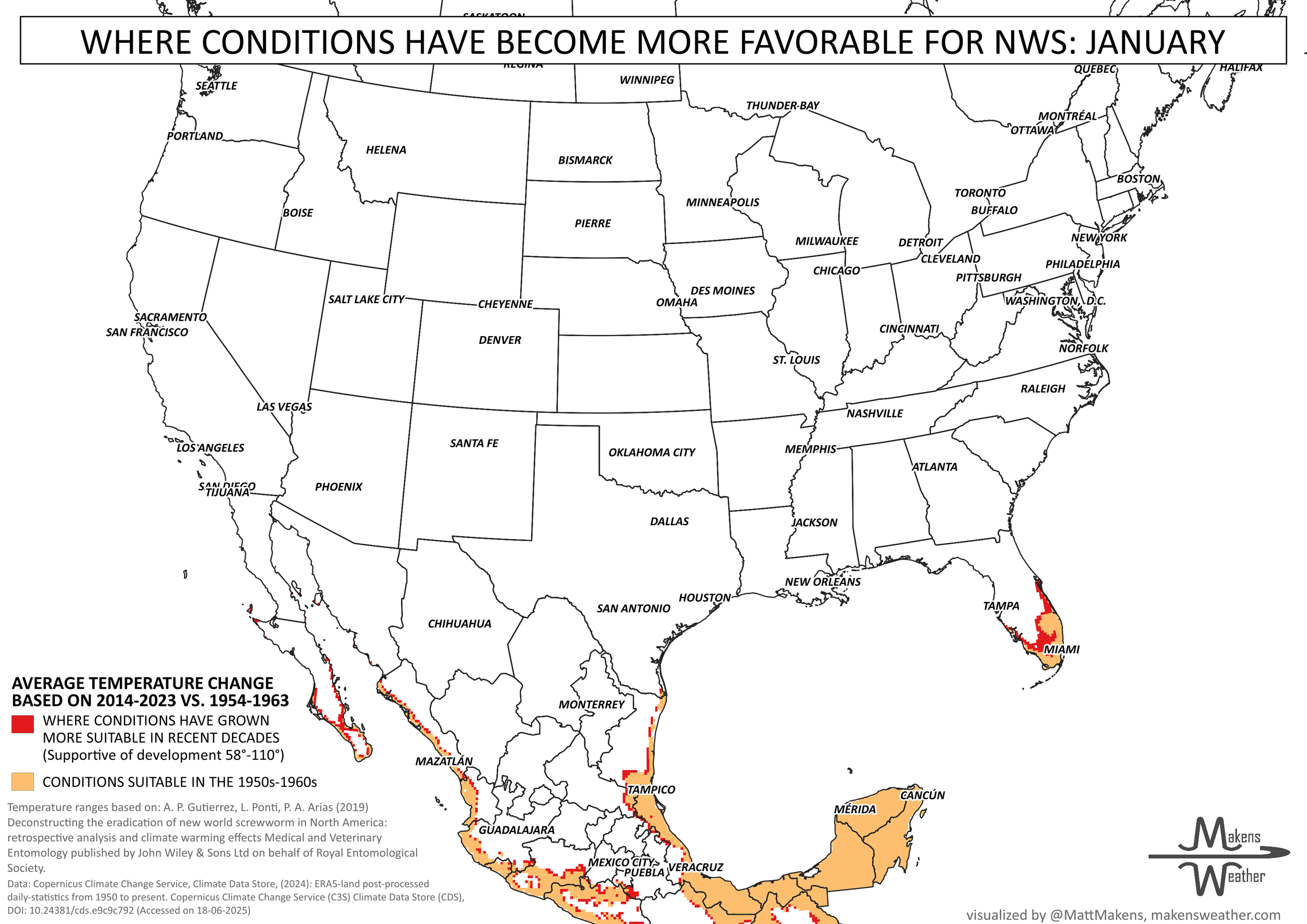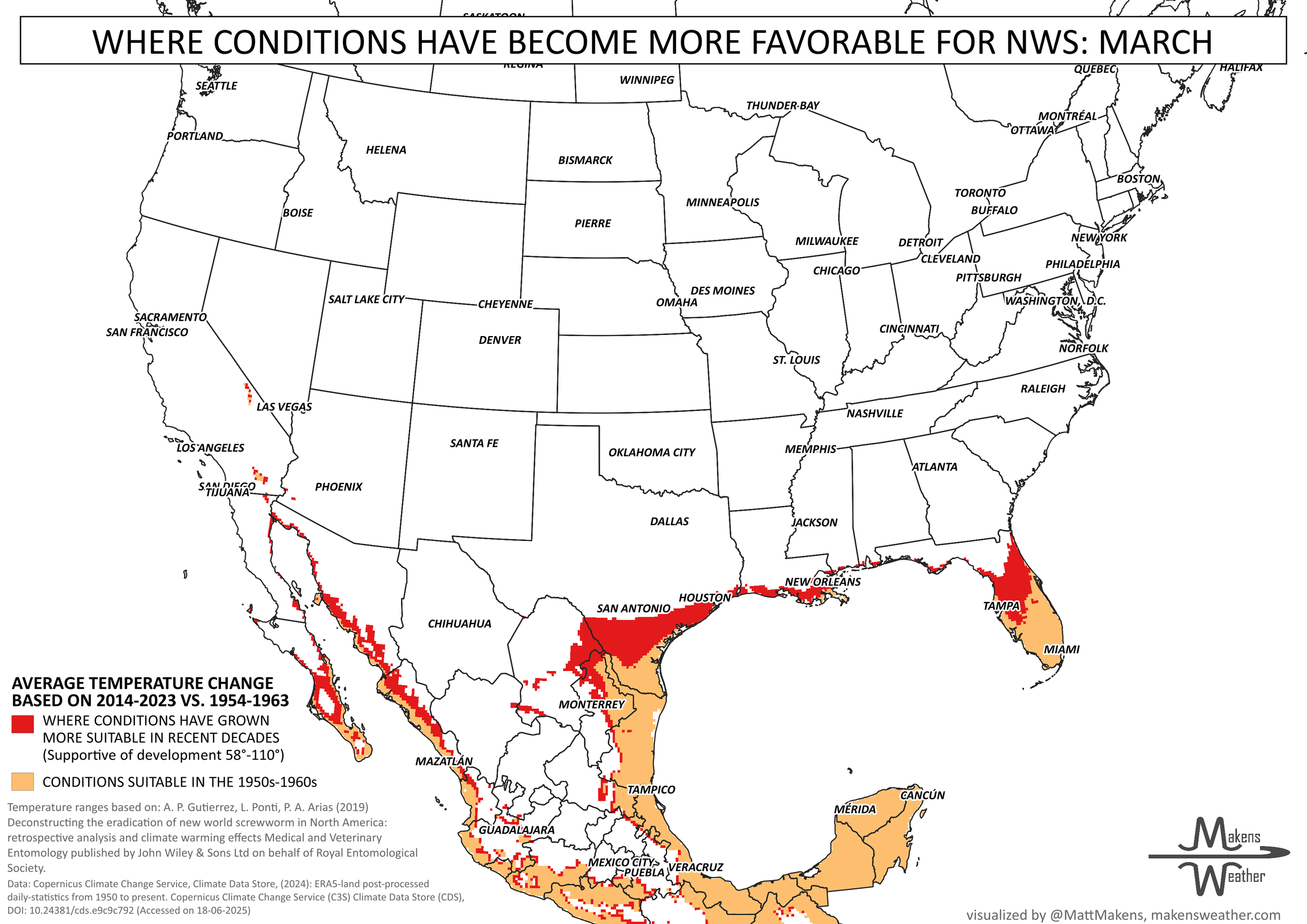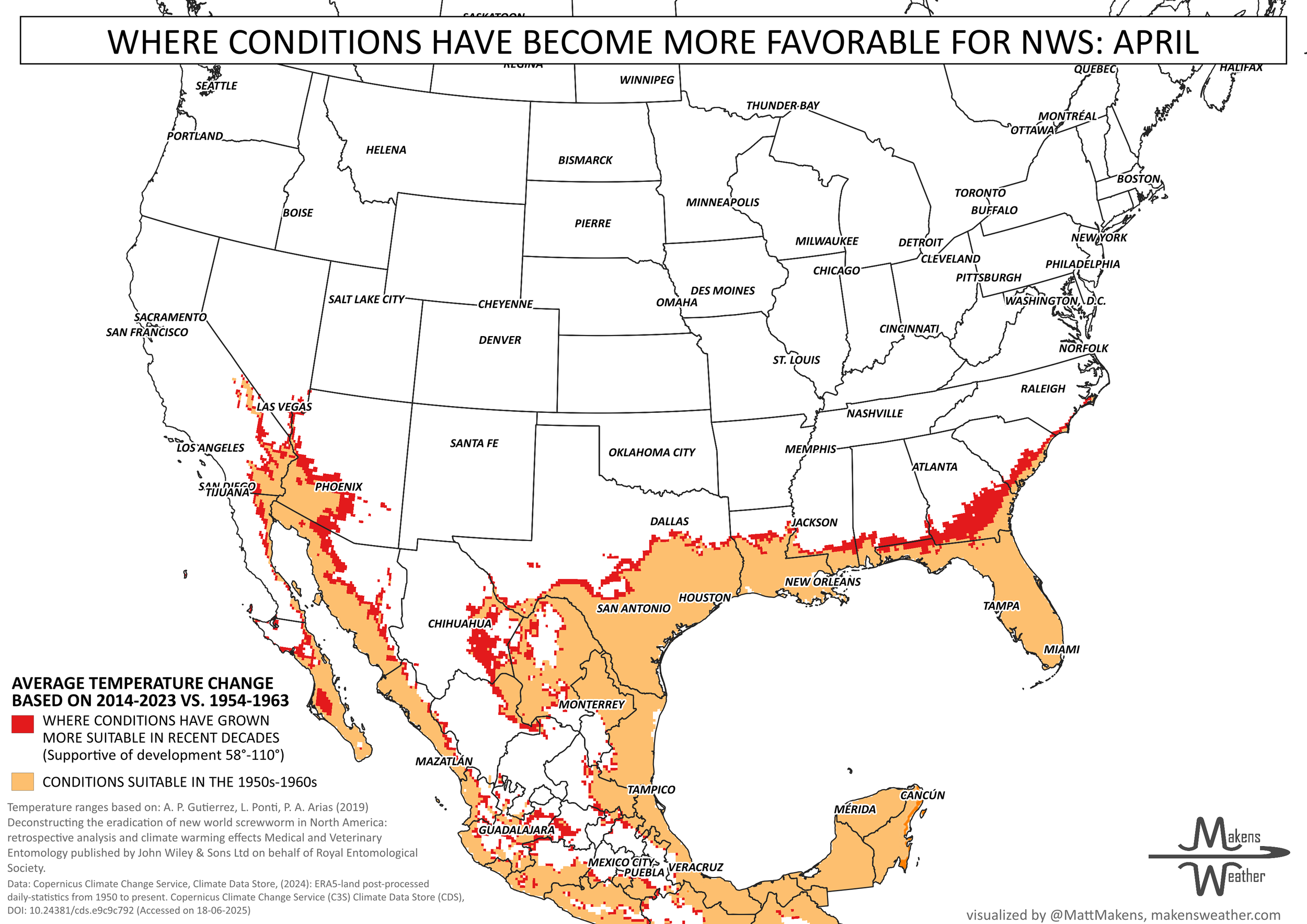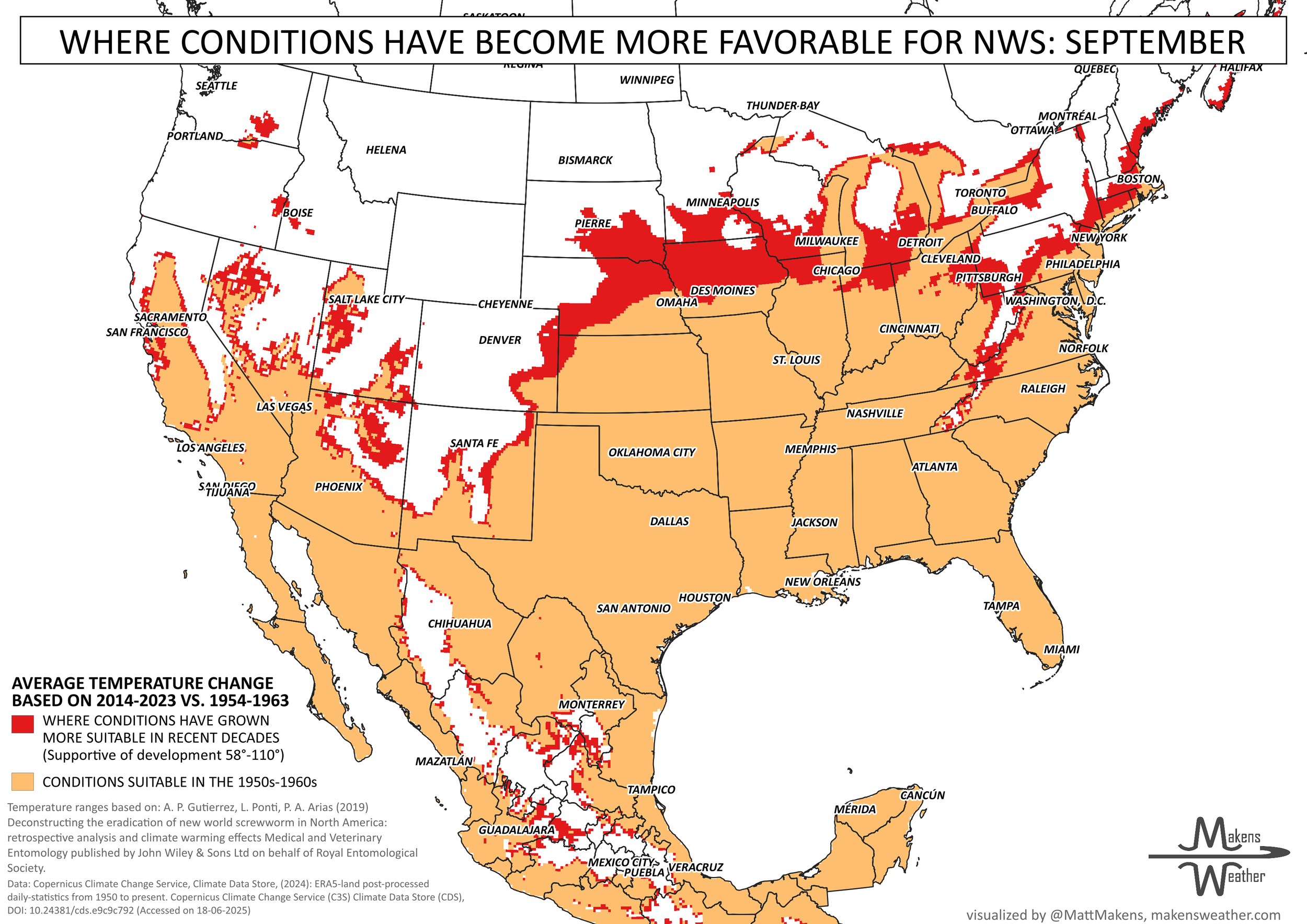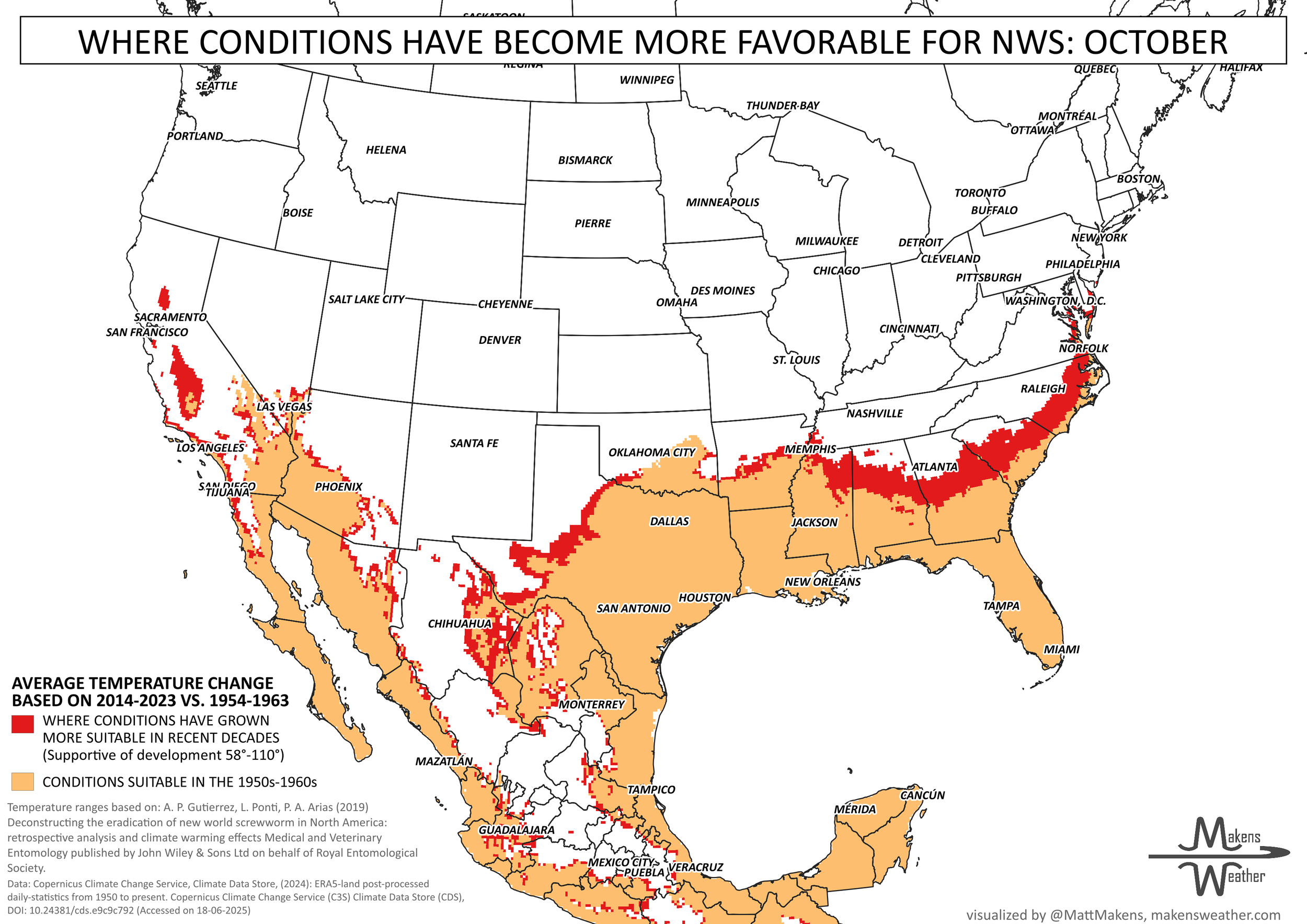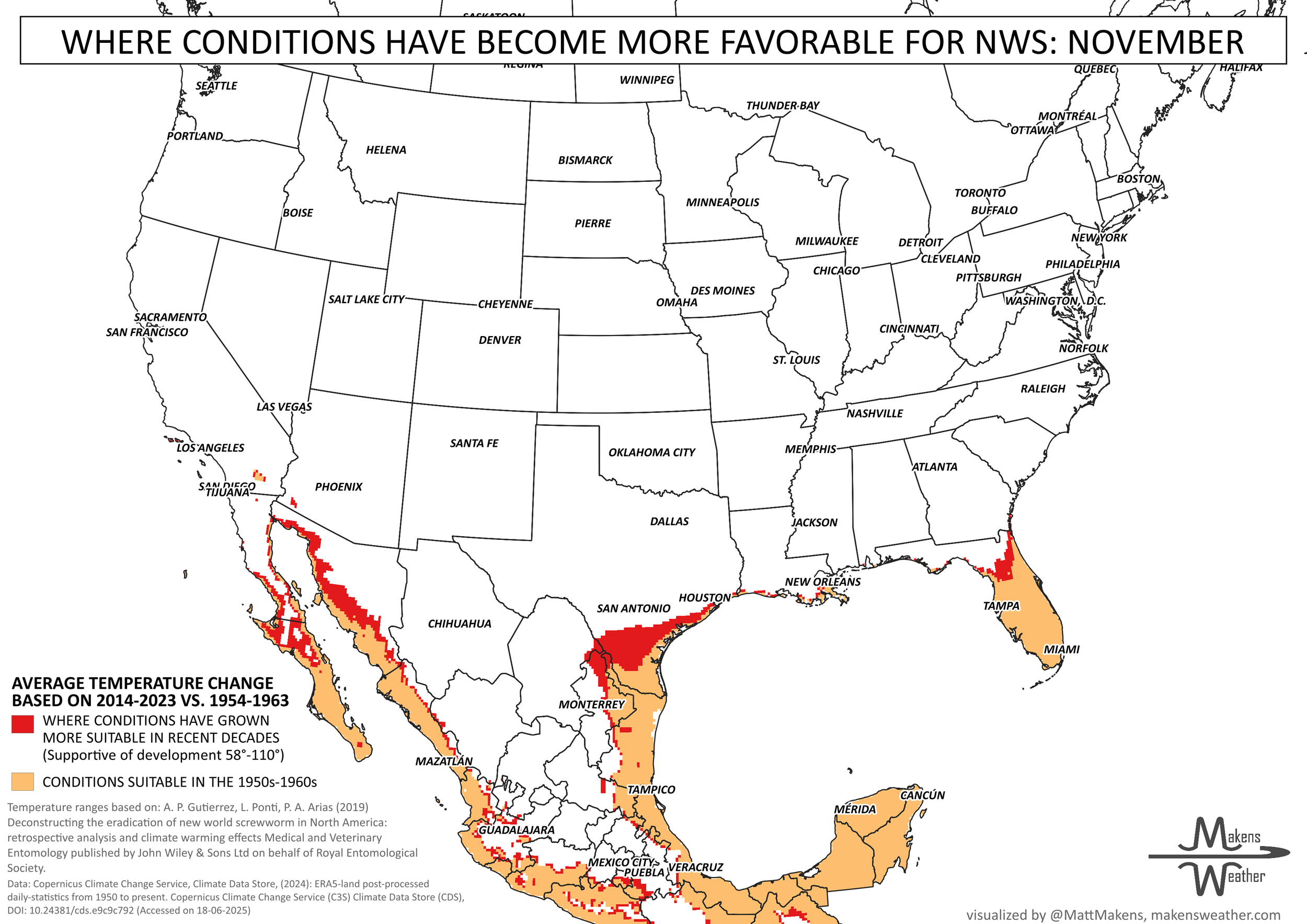Weather’s Relationship to the Spread of New World Screwworm
July 2025 — The New World Screwworm (NWS), once a major threat to domestic livestock production, was largely eradicated from the United States in the 1960s. Yet in recent years, it has reemerged as a concern for American producers as the populations disperse northward from endemic zones. Although the Sterile Insect Technique (SIT) remains a primary control mechanism, studies have made it clear that eradication success, outbreak intensity, and reemergence potential are closely tied to weather and climate.
From seasonal wind patterns to monsoonal moisture, numerous environmental conditions shape the life cycle, spread, and population dynamics of this parasite. Understanding these weather-related drivers is critical not only for control, but also in considering how long-term temperature trends have altered the geographic boundaries of screwworm viability since the major outbreaks of the 1950s and early 1960s.
Temperature thresholds can dictate screwworm development. Research indicates that larval and pupal development cannot proceed below approximately 58°F and halts above 110°F. The optimal temperature for adult survival and reproduction lies around 81.5°F, a range common in tropical and subtropical climates like Mexico and Central America.
Winter temperatures remain one of the most effective natural barriers to NWS spread. Pupae are killed when soil temperature is consistently cooler than 46°F, therefore overwintering survival is not likely across much of the U.S., and, historically, year-round populations have been confined to southern Florida, southern Texas, and parts of Mexico. Conversely, sustained maximums hotter than 95°F can also be limiting - extreme heat reduces adult fly activity and increases mortality in larvae exposed to hot surface soils.
While temperature defines where screwworms can survive, rainfall and moisture influence when and how intensely they can thrive. Outbreaks often follow moderate to heavy rainfall by improving conditions for larval survival. Tools like the Palmer Crop Moisture Index (CMI) have shown promise in predicting screwworm risk, with higher-than-normal CMI values sometimes preceding population spikes.
However, rainfall alone is insufficient. Precipitation timing, duration, and temperatures are equally important. When rainfall coincides with favorable temperatures, screwworm activity tends to increase. In contrast, hot and dry conditions tend to suppress survival and reproduction.
One of the most striking climate connections is the role of seasonal monsoon winds in transporting screwworms over long distances. In multiple outbreak years, adult flies were documented migrating northward into Texas and the desert Southwest via the North American Monsoon (NAM) — a seasonal pattern that delivers moisture to northwestern Mexico and the U.S. Southwest from June through September. During the summer, prevailing winds shift from west to a more humid, southerly flow, creating favorable conditions for fly migration from central and southern Mexico into their northern states and, at times, into the southern U.S. The NAM this year had an early start and gave significant rainfall to parts of Arizona and New Mexico. The NAM typically calms by early fall.
In the 1960s, these wind-assisted movements allowed the temporary reestablishment of breeding populations even after local eradication. In some years, migration spanned hundreds of miles, connecting source populations in northern Mexico to reinfestations in Arizona and New Mexico. This atmospheric “conveyor belt” remains a critical concern in surveillance strategies for livestock-producing regions of the Southwest. The 2025 monsoon was undoubtedly a factor in the most recent northward migration of NWS.
The 1950s–60s were the last era of widespread U.S. screwworm outbreaks and much has changed in global climate since then. Analyzing temperatures of the 1950s and 1960s and comparing them to those from the 2010s and 2020s reveals an expansion in the zones where screwworms can theoretically survive (surface elevation appears to be a factor for NWS population but is not applied to this temperature analysis). Further analysis shows that while the first fall freeze may occur earlier in parts of Texas, the total number of cold-threshold days — critical to overwintering larvae mortality — has decreased. (The ERA5 dataset was used)
Ultimately, weather patterns act as both a barrier and bridge for screwworm activity. Knowing how and when the balance tips is essential to preventing the return of one of the industry’s most damaging parasites.
Favorable condition areas highlighted by month, and how those areas have expanded since the last endemic
When, on average, is the first fall freeze, soil temperatures cooler than 47, & how has that changed since the last endemic.
Lindquist, D. A., Abusowa, M., & Hall, M. J. R. (2020). Deconstructing the eradication of New World screwworm in North America: Retrospective analysis and climate warming effects. Medical and Veterinary Entomology, 34(4), 417–430. https://doi.org/10.1111/mve.12453
Rogers, D. J., & Hay, S. I. (2001). Did the Sterile Insect Technique or Weather Eradicate Screwworm from North America? Agricultural and Forest Entomology, 3(4), 311–317. https://doi.org/10.1046/j.1461-9563.2001.00123.x
Gutierrez, A. P., & Ponti, L. (2014). Eradication of the New World Screwworm from North America: A review of area-wide control programs and the potential for modeling spatial dynamics. Agricultural and Forest Entomology, 16(3), 193–206. https://doi.org/10.1111/afe.12048
Krafsur, E. S., Lindquist, D. A., & Abusowa, M. (1987). Climatological correlates of screwworm (Cochliomyia hominivorax) outbreaks. Medical and Veterinary Entomology, 1(3), 229–235. https://doi.org/10.1111/j.1365-2915.1987.tb00346.x
Mackley, J. W., & Broce, A. B. (1981). Seasonal and spatial distributions of adult screwworms in the Panama Canal Zone. Environmental Entomology, 10(1), 79–84. https://doi.org/10.1093/ee/10.1.79
Rahn, P. R., & Barger, G. L. (1973). Weather conditions and screwworm activity. USDA–ARS Report, C-41.

